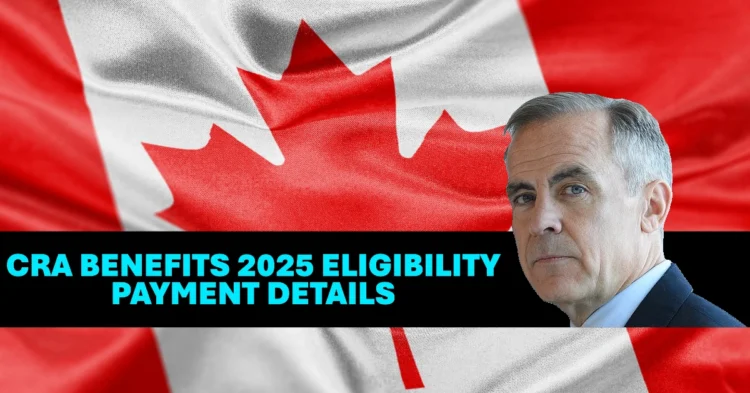A Complete Guide to Eligibility, Payment Amounts, and Application Steps
Welcoming a new child is life-changing—and costly. To support growing families, the Canadian government offers several financial relief programs, including Employment Insurance (EI) maternity and parental benefits and the Canada Child Benefit (CCB). Whether you’re expecting, adopting, or raising young kids, understanding these programs can make a big difference in your family’s financial well-being.
This guide breaks down everything you need to know for 2025: how much you can get, who qualifies, when you’ll be paid, and how to apply.
Table of Contents
Overview of EI and CCB Parental Benefits for 2025
| Benefit | Who’s Eligible | Amount | Payment Schedule |
|---|---|---|---|
| EI Maternity Benefits | Biological mothers with 600+ insurable hours | 55% of income, up to $695/week | Bi-weekly |
| EI Parental Benefits (Standard) | Parents of newborns or adopted children | 55% of income, max $695/week for up to 40 weeks | Bi-weekly |
| EI Parental Benefits (Extended) | Same as above | 33% of income, max $417/week for up to 69 weeks | Bi-weekly |
| Canada Child Benefit (CCB) | Canadian families with children under 18 | Up to $7,787/year (under 6), $6,570/year (6–17) | Monthly |
Understanding EI Maternity and Parental Benefits
These benefits help replace lost income when you take time off work for childbirth or adoption.
Who Qualifies for EI Benefits?
To be eligible for EI maternity or parental leave, you must:
- Have worked at least 600 insurable hours in the past 52 weeks.
- Have paid EI premiums.
- Be experiencing at least a 40% drop in income due to leave.
Types of EI Benefits
- Maternity Benefits:
For biological mothers only, up to 15 weeks at 55% of your average earnings (max $695/week). - Parental Benefits (Standard):
Up to 40 weeks shared between parents. No parent can receive more than 35 weeks individually. Paid at 55% of your income, up to the same weekly maximum. - Parental Benefits (Extended):
Up to 69 weeks shared. No more than 61 weeks for one parent. Paid at a lower rate of 33% of earnings, maxing out at $417/week.
Important: Once you select either standard or extended parental leave, you cannot switch later.
Canada Child Benefit (CCB): Monthly Tax-Free Support for Families
The CCB is a tax-free monthly payment provided to help with the costs of raising children under 18.
Eligibility Requirements
To qualify, you must:
- Be the primary caregiver of the child.
- Be a Canadian resident who files an annual tax return.
- Hold a valid citizenship, permanent residency, or other approved status.
How Much You Can Receive (July 2024 – June 2025)
- Children under 6: Up to $7,787 per year, or $648.91/month.
- Children aged 6–17: Up to $6,570 per year, or $547.50/month.
Monthly CCB Payment Schedule for 2025
| Month | Payment Date |
|---|---|
| January | 20 |
| February | 20 |
| March | 20 |
| April | 17 |
| May | 20 |
| June | 20 |
| July | 18 |
| August | 20 |
| September | 19 |
| October | 20 |
| November | 20 |
| December | 12 |
How to Apply for CRA Parental Benefits
For EI Maternity and Parental Leave
- Visit the Service Canada website.
- Select “Apply for EI Benefits.”
- Submit your SIN, direct deposit info, employer details, and Record of Employment (ROE).
- Expect a decision in approximately 28 days.
- Payments begin bi-weekly, with a one-week unpaid waiting period.
Tip: Apply immediately after stopping work to avoid losing weeks of entitlement.
CRA Blasted Over Mistakes and Duplicate Slips Amid 2025 Tax Season Chaos
April 2025 CRA Benefit Payments in Canada Dates, Amounts, and Eligibility Explained
Some Canadians May Have to Repay Part of Their Carbon Tax Rebate, Says CRA Here’s the Reason
CRA’s $250 One-Time Rebate Has Arrived Who’s Eligible and How to Claim It Quickly
For the Canada Child Benefit (CCB)
There are three ways to apply:
- Through your CRA My Account online.
- By submitting Form RC66.
- Using the Automated Benefits Application when registering your child’s birth.
Other Support Options to Boost Your Parental Income
- Quebec Parental Insurance Plan (QPIP): A separate provincial program with unique rates and eligibility criteria.
- Employer Top-Ups: Some workplaces offer additional pay to bring your benefits closer to 70–90% of your regular salary.
Final Thoughts: Make the Most of Your Parental Leave in 2025
Whether you’re preparing for a new baby or already navigating early childhood, the federal government’s parental benefits are designed to ease your financial load. From EI maternity and parental leave to the monthly CCB payments, these supports offer real relief.
Be sure to verify your eligibility, apply early, and choose the right benefit plan to fit your family’s needs. With the right approach, you can focus more on your child—and less on financial stress.

